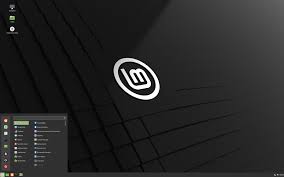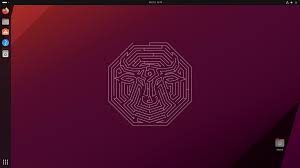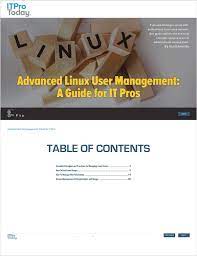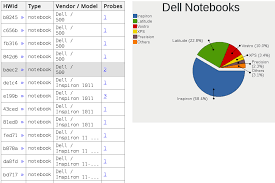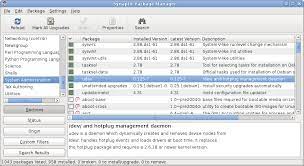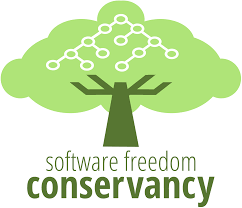Software Freedom: Empowering Users in the Digital Age
In the digital age, software plays an integral role in our daily lives. From operating systems to applications, it shapes the way we communicate, work, and interact with the world. However, not all software is created equal when it comes to freedom. The concept of software freedom is rooted in the belief that users should have control over the software they use, empowering them to modify, distribute, and study it as they see fit.
At its core, software freedom is about granting users the fundamental rights to use, understand, and share software without restrictions. It advocates for transparency and openness in the development process, ensuring that users are not locked into proprietary systems or subject to limitations imposed by a single entity. Instead, it promotes collaboration and community-driven innovation.
One of the key principles of software freedom is the ability to run any program for any purpose. This means that users should have the liberty to choose which software they want to run on their devices without being bound by restrictive licensing agreements or vendor lock-ins. The freedom to tinker with code allows users to customize their software experience according to their needs and preferences.
Another important aspect of software freedom is the right to study how a program works. With access to source code, users can delve into the intricacies of a program’s design and functionality. This not only fosters a deeper understanding of technology but also enables users to identify potential security vulnerabilities or improve upon existing features.
Software freedom also encompasses the right to distribute copies of software. This encourages collaboration and sharing within communities by allowing individuals to pass on their knowledge and creations freely. By promoting open-source initiatives, software freedom fosters an environment where ideas can be refined collectively for the benefit of all.
The concept of software freedom has far-reaching implications beyond individual empowerment. It has led to groundbreaking advancements in various fields such as education, healthcare, scientific research, and government services. Open-source software has enabled cost-effective solutions, driving innovation and accessibility in areas that were previously limited by proprietary systems.
Moreover, software freedom promotes ethical considerations in the digital realm. It challenges the notion of software as a commodity and instead encourages a more democratic approach to technology. By putting users in control, it reduces the risks associated with vendor lock-ins, data privacy breaches, and monopolistic practices.
Fortunately, the movement towards software freedom continues to gain momentum. Numerous organizations and communities are dedicated to promoting open-source initiatives and advocating for user rights. They champion the values of transparency, collaboration, and accessibility in order to create a more equitable digital landscape.
In conclusion, software freedom is a powerful concept that empowers users to take control of their digital lives. It ensures that technology serves the needs of individuals rather than limiting them. By embracing open-source principles and supporting initiatives that uphold user rights, we can foster an environment where innovation flourishes and technology becomes a force for positive change. Let us strive for a future where software freedom is not just an ideal but a fundamental aspect of our digital existence.
Advantages of Software Freedom: Cost Savings, Enhanced Security, Flexibility, Openness, and Freedom of Choice
- Cost Savings
- Increased Security
- Flexibility
- Openness
- Freedom of Choice
7 Drawbacks of Software Freedom: A Closer Look at the UK Perspective
- Increased vulnerability to malware and malicious attacks due to lack of support from the software vendor.
- Potential incompatibility with other software due to lack of standardisation or support for certain features.
- Difficulty in finding technical help or assistance if something goes wrong with the software.
- Limited access to updates and other features, as they may not be available for free versions of software.
- Potential legal issues if copyright is infringed upon when using open source code or libraries without permission from the author/owner.
- Difficulty in understanding complex licensing agreements which can be confusing and difficult to interpret correctly in some cases.
- Lack of a single point of contact for customer service, making it harder to get help quickly when needed most urgently
Cost Savings
Cost Savings: Unleashing the Potential of Software Freedom
In today’s fast-paced digital landscape, businesses are constantly seeking ways to optimize their operations while keeping costs under control. One significant advantage of embracing software freedom is the potential for substantial cost savings. By adopting open-source software, businesses can access and utilize powerful tools without the burden of expensive license fees.
Traditionally, proprietary software has required businesses to make significant investments in licensing fees to legally use and deploy various applications. These costs can quickly add up, especially for organizations that rely on a multitude of software solutions across different departments and functions. However, with software freedom, businesses can break free from these financial constraints.
Open-source software provides a viable alternative by granting users the freedom to use, modify, and distribute the software without any licensing restrictions. This means that businesses can leverage a wide range of powerful applications without having to pay hefty upfront or recurring fees. The cost savings associated with open-source software can be significant and have a positive impact on a company’s bottom line.
Moreover, the absence of licensing fees allows businesses to allocate their resources more effectively. Instead of investing large sums in proprietary licenses, organizations can redirect those funds towards other critical areas such as research and development or employee training. This flexibility enables companies to stay agile in an ever-evolving marketplace while still benefiting from robust software solutions.
Additionally, the cost savings associated with software freedom extend beyond initial acquisition expenses. With open-source software, there are no vendor lock-ins or mandatory upgrade cycles that often come with proprietary solutions. Businesses have the freedom to choose when and how they want to upgrade their systems based on their specific needs and budgetary considerations.
Furthermore, open-source communities foster collaboration among developers worldwide who contribute their expertise voluntarily. This collaborative approach often results in high-quality software that is continuously improved upon by a global network of contributors. As a result, businesses benefit from reliable and secure applications without having to bear the full cost of development and maintenance.
It’s worth noting that while software freedom offers cost savings, it does not mean that all open-source software is entirely free. Some open-source projects may have associated costs for support, customization, or additional services. However, these costs are typically more transparent, flexible, and tailored to specific business requirements compared to the rigid licensing models of proprietary software.
In conclusion, software freedom presents a compelling case for businesses seeking cost-effective solutions without compromising on functionality or quality. By embracing open-source software, organizations can unlock a world of possibilities while significantly reducing their financial burden. The ability to access and utilize powerful applications without costly licensing fees empowers businesses to allocate resources strategically and remain competitive in an ever-changing digital landscape. Let software freedom be your catalyst for cost savings and innovation.
Increased Security
Increased Security: A Key Benefit of Software Freedom
In today’s digital landscape, security is a paramount concern for individuals and organizations alike. One significant advantage of software freedom is the increased security it offers to users. When opting for free software, users can have confidence in the code’s integrity and reliability, knowing that it has been thoroughly tested and reviewed by a community of users who have actively contributed to its development.
Unlike proprietary software, where the inner workings of the code are kept secret, free software allows users to access and examine the source code. This transparency provides an extra layer of security as it allows for comprehensive scrutiny by a diverse range of experts. With many eyes reviewing the code, potential vulnerabilities or weaknesses can be identified and addressed promptly.
The collaborative nature of free software development fosters a community-driven approach to security. Users who discover flaws or vulnerabilities in the code can contribute to fixing them or alerting developers to ensure timely patches are released. This collective effort significantly reduces the risk of hidden vulnerabilities or malicious code going unnoticed, making free software inherently more secure compared to proprietary alternatives.
Furthermore, the open nature of free software encourages continuous improvement. Community members actively engage in testing, refining, and enhancing the codebase over time. As a result, bugs are quickly identified and resolved through collaborative efforts. This ongoing process creates a robust ecosystem where security updates are regularly released.
In contrast, proprietary software often relies solely on internal teams for testing and development. While these teams may be skilled and dedicated, their resources may be limited compared to an entire community working together on open-source projects. Consequently, hidden vulnerabilities or weaknesses in proprietary software may go unnoticed until they are exploited by malicious actors.
By embracing software freedom and opting for open-source solutions, users gain peace of mind knowing that their chosen software has undergone rigorous scrutiny from a diverse community of experts. The collective intelligence helps ensure that potential security risks are minimized through regular updates and prompt bug fixes.
In conclusion, increased security is a significant benefit of software freedom. The transparency and collaborative nature of free software development provide users with the assurance that the code they rely on has been thoroughly tested and reviewed. This collective effort helps identify and address vulnerabilities promptly, reducing the risk of hidden security flaws. By embracing software freedom, users can enjoy a more secure digital experience while retaining control over their technology choices.
Flexibility
Flexibility: Unleashing the Power of Software Freedom
In the realm of software, flexibility is a highly sought-after attribute. It empowers users to shape their digital experiences according to their unique needs and requirements. This is where software freedom truly shines, offering a level of flexibility that proprietary solutions often struggle to match.
With free software, users are not merely consumers but active participants in the development process. The ability to access and modify the source code is a game-changer. It allows individuals to dive into the inner workings of a program, understanding its intricacies and tailoring it to suit their specific use cases.
The power of flexibility lies in the hands of users who possess the technical know-how or are willing to learn. By modifying the source code, they can add new features, customize existing ones, or optimize performance. This level of control over software functionality goes beyond what is possible with proprietary solutions.
Imagine having an application that almost meets your needs but lacks a specific feature crucial for your workflow. With free software, you have the freedom to extend its capabilities by adding that missing functionality yourself or collaborating with others in the community who share similar requirements. This flexibility eliminates dependence on vendors and empowers users to take charge of their own digital tools.
Furthermore, flexibility in free software extends beyond individual customization. It cultivates a culture of collaboration and knowledge sharing within communities. Users can contribute their modifications back to the community, allowing others to benefit from their enhancements and build upon them further. This collective effort leads to an ecosystem where software evolves rapidly based on real-world user feedback and diverse perspectives.
The flexibility offered by free software is particularly valuable for businesses and organizations seeking tailored solutions without hefty licensing fees or vendor lock-ins. They have the freedom to adapt applications according to their specific workflows or integrate them seamlessly with existing systems.
Moreover, this flexibility promotes innovation by encouraging experimentation and exploration within technological domains. Developers have the opportunity to push the boundaries of what software can do, fostering a culture of continuous improvement and pushing the limits of creativity.
In conclusion, software freedom’s pro of flexibility is a game-changer for users. The ability to modify source code empowers individuals to tailor software to their specific needs and requirements, providing greater control over their digital experiences. Whether it’s adding features, optimizing performance, or customizing workflows, free software ensures that users are not limited by the constraints of proprietary solutions. So let us embrace software freedom and unlock the true potential of flexibility in our digital lives.
Openness
Openness: Accelerating Innovation through Free Software Collaboration
In the realm of software development, one of the significant advantages of embracing software freedom is the culture of openness it fosters. Free software encourages collaboration among developers from all corners of the globe, resulting in accelerated innovation and the creation of superior products. This is primarily due to increased competition among developers hailing from different countries or regions.
When software is free and open-source, it breaks down barriers and allows developers to collaborate seamlessly irrespective of geographical boundaries. This global collaboration brings together diverse perspectives, experiences, and expertise, creating a melting pot of ideas and approaches. Developers from different backgrounds can contribute their unique insights, leading to fresh perspectives on problem-solving and technological advancements.
The inherent openness of free software also promotes healthy competition among developers. With no proprietary restrictions or monopolistic practices hindering progress, developers are driven to create better products to stand out in a highly competitive environment. The absence of artificial barriers fosters an atmosphere where innovation thrives as developers strive to push boundaries and deliver cutting-edge solutions.
Furthermore, open collaboration in free software projects enables rapid knowledge sharing and learning opportunities for developers. By working together on shared codebases and projects, they gain exposure to different coding styles, techniques, and best practices. This cross-pollination of ideas fuels continuous improvement as developers learn from one another and incorporate new approaches into their work.
The collaborative nature of free software also encourages peer review and scrutiny. With many eyes examining the codebase, potential bugs or vulnerabilities can be identified more swiftly. This collective effort results in robust code quality assurance processes that enhance the overall reliability and security of free software projects.
Moreover, open collaboration in free software projects often leads to the development of vibrant communities surrounding these initiatives. These communities provide platforms for communication, knowledge exchange, and mentorship opportunities for aspiring developers. The sense of belonging within these communities fosters a supportive environment that nurtures talent while encouraging newcomers to contribute and grow.
Ultimately, the openness of free software collaboration drives the rapid evolution of technology. Through increased competition, diverse perspectives, and shared knowledge, developers are constantly pushing the boundaries of what is possible. This not only benefits developers themselves but also has a positive impact on end-users who benefit from more innovative and refined products.
In conclusion, embracing software freedom and open collaboration in the development process brings forth numerous advantages. The culture of openness encourages collaboration among developers from around the world, leading to accelerated innovation and improved products. The healthy competition that arises fosters continuous improvement, while knowledge sharing and peer review enhance code quality. By embracing software freedom and promoting open collaboration, we can unlock the full potential of global talent and create a future where technology knows no bounds.
Freedom of Choice
Freedom of Choice: Embracing Software Freedom
In today’s digital landscape, the freedom to choose is a fundamental right that users should have when it comes to software. One of the key advantages of software freedom is the ability to break free from the constraints of a single vendor or platform and explore a multitude of options available on the market. By embracing free software, users can select solutions that best meet their needs and preferences without worrying about being locked into a particular solution forever due to licensing costs or other restrictions imposed by vendors.
When users are tied to proprietary software, they often find themselves at the mercy of a single vendor. This can result in limited flexibility, as they may be forced to use specific applications or adhere to certain standards dictated by that vendor. In contrast, software freedom empowers users to explore different alternatives and choose what works best for them. They are not bound by restrictive licensing agreements or locked into using a particular product simply because it is the only option available.
The availability of free software provides users with a diverse range of choices. Whether it’s an operating system, office suite, graphic design tool, or any other type of software, there are numerous open-source options available that can rival proprietary solutions in terms of functionality and performance. Users have the freedom to evaluate different options, compare features, and make informed decisions based on their specific requirements.
Moreover, software freedom encourages healthy competition among developers and vendors. The open-source nature of free software fosters innovation and collaboration within communities. Developers from around the world contribute their expertise and ideas to create high-quality alternatives that challenge traditional proprietary offerings. This vibrant ecosystem ensures that users have access to a wide array of reliable and feature-rich solutions.
Another advantage of software freedom is its potential for cost savings. Proprietary software often comes with hefty licensing fees that can be burdensome for individuals and organizations alike. By embracing free alternatives, users can significantly reduce their expenses without compromising on quality or functionality. The absence of licensing costs allows for greater financial flexibility, enabling users to allocate resources to other areas that are critical to their operations.
Furthermore, software freedom ensures that users are not at the mercy of a single vendor’s decisions or business strategies. In a rapidly evolving technology landscape, it is essential to have the freedom to adapt and switch between software solutions as needed. Whether it’s migrating from one operating system to another or transitioning from one application to a more suitable alternative, software freedom empowers users with the agility and flexibility necessary to keep up with changing requirements.
In conclusion, embracing software freedom offers users the invaluable advantage of freedom of choice. By breaking free from proprietary constraints and exploring open-source alternatives, users can select software solutions that align with their needs and preferences. The availability of diverse options fosters healthy competition, promotes innovation, and provides cost savings opportunities. Let us embrace software freedom and enjoy the liberty of choosing what works best for us in the ever-evolving digital landscape.
Increased vulnerability to malware and malicious attacks due to lack of support from the software vendor.
The Conundrum of Software Freedom: Vulnerability to Malware and Attacks
Software freedom, with its emphasis on user empowerment and open-source principles, has undoubtedly revolutionized the digital landscape. However, it is essential to acknowledge that this paradigm shift also brings certain challenges. One significant con of software freedom is the increased vulnerability to malware and malicious attacks due to the lack of support from software vendors.
In a proprietary software environment, vendors typically provide regular updates, patches, and security fixes to address vulnerabilities and protect users from emerging threats. This level of support ensures that users have a safety net against potential attacks. However, in the realm of open-source software where individuals have the freedom to modify and distribute code, the responsibility for maintaining security often falls on the community or individual users.
While open-source communities are generally proactive in addressing security concerns, there can be instances where vulnerabilities go unnoticed or take longer to fix. This delay can leave users exposed to potential exploits for an extended period. Without a central authority overseeing updates and security measures, it becomes crucial for individuals relying on open-source software to stay vigilant and actively participate in securing their systems.
Moreover, the lack of support from software vendors can result in compatibility issues when integrating different applications or components within an open-source ecosystem. As each piece of software may have its own development timeline and priorities, ensuring seamless compatibility across various projects can be challenging. This fragmented approach may inadvertently create gaps in security measures or hinder timely responses to emerging threats.
However, it is important not to overlook the efforts made by open-source communities in addressing these concerns. Many projects have dedicated teams focused on security audits, bug tracking systems, and collaboration with external researchers to identify vulnerabilities promptly. The community-driven nature of open-source also allows for more eyes on the codebase, increasing the likelihood of discovering and resolving issues quickly.
To mitigate these cons associated with software freedom’s vulnerability to malware and attacks, users must adopt best practices for securing their systems. This includes regularly updating software, implementing robust security measures such as firewalls and antivirus software, and staying informed about potential risks and vulnerabilities within the open-source ecosystem.
Additionally, fostering a culture of responsible disclosure and collaboration within open-source communities is vital. Encouraging users to report vulnerabilities they discover and actively participating in the development process can help ensure that security concerns are addressed promptly.
In conclusion, while software freedom offers numerous benefits, it is not without its challenges. The increased vulnerability to malware and malicious attacks due to the lack of support from software vendors requires users to take an active role in securing their systems. By adopting best practices and actively participating in open-source communities, users can navigate this conundrum while enjoying the advantages of software freedom.
Potential incompatibility with other software due to lack of standardisation or support for certain features.
The Conundrum of Software Freedom: Compatibility Challenges
Software freedom, with its emphasis on user empowerment and open collaboration, undoubtedly has numerous advantages. However, like any concept, it also comes with its own set of challenges. One notable con is the potential for incompatibility with other software due to a lack of standardization or support for certain features.
In the realm of software development, standardization plays a crucial role in ensuring interoperability between different programs. When software adheres to common standards and protocols, it becomes easier for users to integrate various applications seamlessly. Unfortunately, the nature of software freedom can sometimes lead to fragmentation and divergence from established standards.
One issue arises from the sheer variety of open-source projects available. While this diversity fosters innovation and choice, it can also result in compatibility issues when different pieces of software do not align perfectly. Without strict adherence to standardized protocols or formats, there is a risk that certain features may not work as expected or may not be supported at all.
Moreover, the lack of comprehensive support for specific features can hamper interoperability. Some open-source projects may prioritize certain functionalities over others due to limited resources or varying priorities within their development communities. This can create challenges when attempting to integrate such software with other tools or systems that heavily rely on those unsupported features.
Another factor contributing to compatibility challenges is the absence of unified governance or centralized control in many open-source projects. While this decentralized approach allows for greater community involvement and flexibility, it can also result in inconsistencies across different versions or distributions of the same software. Such discrepancies can lead to compatibility issues when attempting to use multiple versions or distributions together.
However, it is important to note that efforts are being made within the open-source community to address these compatibility concerns. Organizations and communities are actively working towards establishing common standards and improving interoperability between various software projects. Initiatives such as cross-project collaborations and standardization bodies aim to bridge gaps and ensure smoother integration between different pieces of software.
Furthermore, advancements in technology and increased awareness of compatibility challenges have led to improved practices within the open-source ecosystem. Developers are increasingly mindful of the need for compatibility and strive to design their software with greater consideration for interoperability. This has resulted in the development of tools and libraries specifically designed to facilitate integration between different software components.
In conclusion, while software freedom brings numerous benefits, it is essential to acknowledge the potential challenges that arise from compatibility issues. The lack of standardization or support for certain features can lead to incompatibilities between different software applications. However, through collaborative efforts, increased awareness, and improved practices, the open-source community is actively working towards mitigating these challenges and ensuring a more seamless integration experience for users.
Difficulty in finding technical help or assistance if something goes wrong with the software.
The Conundrum of Software Freedom: Navigating Support Challenges
Software freedom, with its emphasis on user empowerment and open-source principles, undoubtedly brings numerous advantages. However, like any concept, it is not without its challenges. One notable con of software freedom is the potential difficulty in finding technical help or assistance if something goes wrong with the software.
In a world dominated by proprietary software, users often have access to dedicated support teams or extensive documentation provided by the software vendors. This ensures that when issues arise, users can easily seek guidance and find solutions. However, in the realm of open-source software, the support landscape can be more complex.
One of the main reasons behind this challenge is the decentralized nature of open-source projects. While vibrant communities surround many open-source software initiatives, technical support may rely heavily on community-driven efforts rather than dedicated professional teams. Consequently, obtaining immediate assistance for specific issues can sometimes be a more time-consuming process.
Furthermore, due to the diverse range of open-source projects available, finding comprehensive and up-to-date documentation for every piece of software can be challenging. Although many projects strive to provide extensive guides and resources, it may not always match the level of detail found in proprietary software documentation.
However, it’s important to note that this con doesn’t imply an absence of support altogether. Open-source communities are known for their collaborative spirit and willingness to help fellow users troubleshoot problems. Online forums, mailing lists, and chat channels often serve as valuable platforms where users can seek advice from experienced community members.
To navigate this challenge effectively, users can adopt a proactive approach when working with open-source software. Here are a few strategies:
- Engage with the Community: Actively participating in relevant online forums or mailing lists specific to the software you’re using can help you tap into a wealth of knowledge within the community. By sharing your issues or questions, you increase your chances of receiving helpful responses from experienced users or developers.
- Explore Documentation and Resources: Take advantage of available documentation, wikis, and official project websites. While they may not always be as extensive as proprietary software resources, they often contain valuable insights and troubleshooting tips.
- Collaborate with Developers: If you encounter a critical issue or bug, consider reporting it directly to the developers. Open-source projects often appreciate user feedback and contributions to improve their software. By actively engaging with developers, you not only help address your own concerns but also contribute to the overall improvement of the software for the community.
In conclusion, while finding technical help or assistance for open-source software can present challenges compared to proprietary alternatives, the vibrant open-source community and collaborative nature of these projects provide avenues for support. By actively engaging with the community, exploring available documentation, and collaborating with developers, users can navigate this con effectively and continue to enjoy the benefits of software freedom in their digital journeys.
Limited access to updates and other features, as they may not be available for free versions of software.
The Con of Software Freedom: Limited Access to Updates and Features
While software freedom advocates for user empowerment and open access, it is important to acknowledge that there can be downsides to this approach as well. One notable con of software freedom is the limited availability of updates and additional features for free versions of software.
In many cases, developers offer free versions of their software as a way to introduce users to their product or provide basic functionality at no cost. However, these free versions often come with limitations in terms of access to updates and advanced features. This is primarily because developers need financial support to sustain the development and maintenance of their software.
When users opt for free versions, they may miss out on the latest updates that address bugs, security vulnerabilities, or compatibility issues. These updates are crucial for maintaining a stable and secure software environment. Without access to timely updates, users may be exposed to potential risks or encounter compatibility problems with other software or hardware components.
Furthermore, advanced features are often reserved for premium or paid versions of the software. These features could enhance productivity, improve user experience, or provide additional functionalities that cater to specific needs. While it is understandable that developers need to generate revenue from their products, it can be frustrating for users who rely on the free version but desire access to these enhanced capabilities.
It’s worth noting that limited access to updates and features is not necessarily inherent in all cases of software freedom. Many open-source projects have thriving communities that actively contribute updates and new features voluntarily. However, this may not always be the case across all software applications.
To mitigate this con, users have several options available. They can choose between upgrading to paid versions if they require advanced functionality or rely on community-supported distributions where volunteers contribute updates and new features regularly. Additionally, some developers offer subscription models or donation-based systems where users can contribute financially towards the development efforts.
In conclusion, while software freedom brings numerous benefits such as transparency, customization, and accessibility, limited access to updates and advanced features can be a drawback. Users should carefully consider their needs and weigh the trade-offs between free versions and paid options to ensure they have access to the necessary updates and features required for their software experience.
Potential legal issues if copyright is infringed upon when using open source code or libraries without permission from the author/owner.
Navigating the Legal Landscape: Copyright Infringement and Software Freedom
While software freedom promotes openness and collaboration, it is important to be aware of the potential legal pitfalls that can arise if copyright is infringed upon when using open source code or libraries without permission from the author or owner. Understanding and respecting copyright laws are crucial for maintaining a healthy ecosystem of software development and ensuring the protection of intellectual property rights.
Open source code and libraries are typically released under specific licenses that grant users certain rights and responsibilities. These licenses vary in terms of their permissions, restrictions, and obligations. It is essential to carefully review and comply with the terms outlined in each license to avoid unintentional copyright infringement.
Using open source code without proper authorization or failing to adhere to licensing requirements can expose individuals or organizations to legal consequences. Copyright holders have the right to enforce their intellectual property rights and may pursue legal action if their work is used improperly. This can result in financial penalties, injunctions, or damage to one’s reputation.
To mitigate the risk of copyright infringement, it is advisable to follow best practices when working with open source code. Firstly, ensure that you understand the specific license terms associated with the code or library you intend to use. Some licenses may require attribution, while others may impose restrictions on how you can distribute modified versions of the software.
Secondly, maintain accurate records of all open source components used within your projects. This includes keeping track of licenses, attributions, and any modifications made. By documenting this information, you can demonstrate compliance with licensing requirements if ever questioned.
Additionally, it is crucial to stay up-to-date with changes in licensing terms or any potential legal issues related to specific open source projects. Regularly reviewing updates from project maintainers or consulting legal experts can help you stay informed about any changes that could impact your usage of open source software.
Lastly, consider seeking legal advice if you have concerns about copyright issues or need clarification on licensing terms. Legal professionals with expertise in intellectual property and software licensing can provide valuable guidance to ensure compliance and mitigate potential risks.
While software freedom encourages the use and sharing of open source code, it is essential to respect the rights of copyright holders. By understanding and adhering to licensing terms, maintaining proper documentation, and seeking legal advice when necessary, individuals and organizations can navigate the legal landscape surrounding open source software while still benefiting from the advantages of software freedom.
Remember, embracing software freedom should always go hand in hand with responsible usage and compliance with copyright laws. By striking a balance between innovation, collaboration, and legal obligations, we can foster a thriving open source community that respects the rights of creators while driving technological advancement.
Difficulty in understanding complex licensing agreements which can be confusing and difficult to interpret correctly in some cases.
The Conundrum of Complex Licensing Agreements: A Challenge in Software Freedom
While software freedom advocates for transparency and openness, there is one con that often poses a challenge for users: the difficulty in understanding complex licensing agreements. In some cases, these agreements can be confusing and difficult to interpret correctly, creating a barrier to fully embracing the benefits of software freedom.
Licensing agreements are legal documents that outline the terms and conditions under which software can be used, modified, and distributed. They play a crucial role in defining the rights and responsibilities of both users and developers. However, the language used in these agreements can be laden with technical jargon and legal terminology that may be unfamiliar to many users.
For individuals without a legal or technical background, deciphering these complex licensing agreements can be a daunting task. The intricacies of intellectual property laws, copyright provisions, and specific usage restrictions can easily become overwhelming. Users may find it challenging to navigate through the legalese, leading to confusion about their rights and obligations.
This difficulty in understanding licensing agreements can have practical implications. Users may unintentionally violate terms or unknowingly limit their own freedoms due to misinterpretation. This lack of clarity may discourage some individuals from engaging with open-source software altogether, as they fear inadvertently crossing legal boundaries.
To address this issue, efforts have been made to simplify licensing agreements and make them more accessible to non-experts. Some organizations provide plain language summaries or FAQs alongside complex legal texts to help users grasp the key points more easily. Additionally, community forums and online resources offer support for individuals seeking clarification on specific licensing terms.
Moreover, initiatives are underway to develop standardized licenses that are easier for users to understand while still protecting developers’ rights. These simplified licenses aim to strike a balance between legal precision and user-friendliness. By promoting clearer communication between developers and users, they help bridge the gap created by complex licensing agreements.
In an ideal world, software freedom would be accompanied by clear, concise, and easily understandable licensing agreements. Users would have no trouble comprehending their rights and responsibilities, enabling them to fully embrace the benefits of open-source software. However, achieving this goal requires ongoing collaboration and dialogue between developers, legal experts, and the wider user community.
In conclusion, while software freedom offers numerous advantages, the difficulty in understanding complex licensing agreements remains a con that needs to be addressed. Efforts to simplify these agreements and make them more accessible are crucial to ensure that users can fully exercise their rights without fear of unintentional violations. By striving for greater clarity and transparency in licensing practices, we can enhance the user experience and promote wider adoption of open-source software.
The Conundrum of Software Freedom: The Challenge of Customer Support
Software freedom, with its emphasis on user empowerment and open-source development, has undeniably revolutionized the digital landscape. However, like any concept, it is not without its challenges. One notable con of software freedom is the lack of a single point of contact for customer service, making it harder to get help quickly when needed most urgently.
In traditional proprietary software models, users often have access to dedicated customer support teams that can swiftly address their concerns or technical issues. This centralized approach provides a sense of security and reassurance, knowing that help is just a phone call or email away.
On the other hand, in the realm of open-source software, where development is community-driven and decentralized, the absence of a single point of contact for customer service can present difficulties. When users encounter problems or require immediate assistance, they may find themselves navigating through various forums or online communities in search of answers.
While these communities are often filled with knowledgeable individuals who are willing to lend a helping hand, finding the right solution amidst a sea of information can be time-consuming and frustrating. Moreover, there is no guarantee that someone will respond promptly or that the suggested solutions will resolve the issue at hand.
This lack of a central customer support channel can become particularly challenging when urgent assistance is needed. For businesses relying on open-source software for critical operations, any downtime or technical glitch could have significant consequences. In such cases, waiting for responses from multiple sources may not be feasible or efficient.
However, it’s important to note that this con does not negate the benefits and value provided by software freedom. Open-source software thrives on collaboration and community involvement, fostering innovation and enabling users to customize their experiences. The absence of a centralized customer support system should be viewed as an inherent trade-off for these advantages.
Fortunately, there are steps that can be taken to mitigate this challenge. Open-source projects can establish official support channels or partnerships with third-party organizations that offer dedicated customer service. This way, users have a reliable point of contact when they need immediate assistance, while still enjoying the benefits of software freedom.
Additionally, open-source communities can focus on improving documentation and creating comprehensive knowledge bases to address common issues. By providing clear and accessible resources, users can find answers to their questions more efficiently, reducing their reliance on immediate customer support.
In conclusion, the lack of a single point of contact for customer service is indeed a con of software freedom. However, it is important to recognize this challenge within the broader context of the advantages that open-source software provides. As the open-source movement continues to evolve, finding innovative solutions to streamline customer support will help strike a balance between user empowerment and efficient assistance when needed most urgently.




